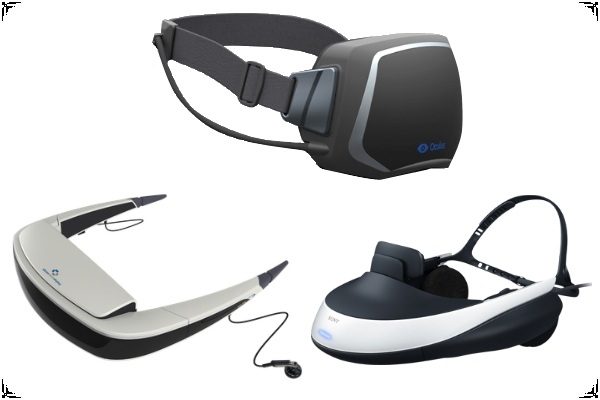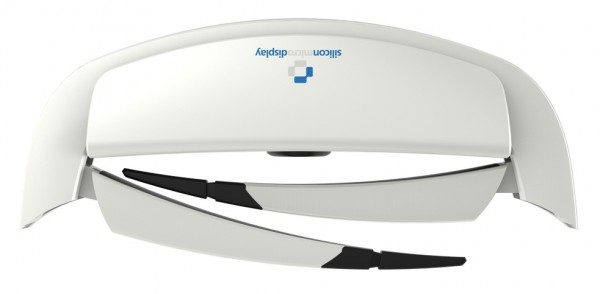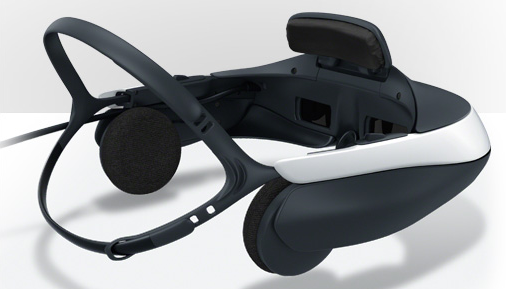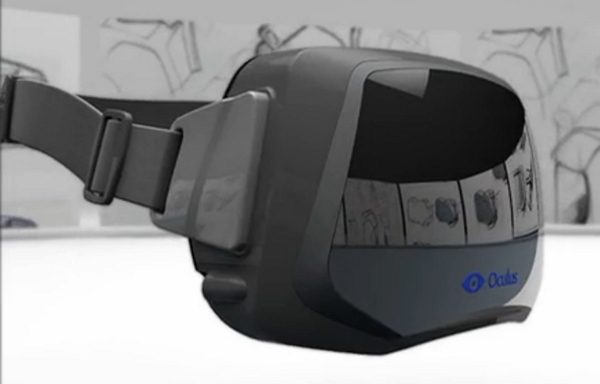Looking for an Oculus Rift game list? Click here.
In the last 9 months we’ve seen two consumer-oriented HMDs hit the market, Sony’s HMZ-T1 and Silicon Micro Display’s ST1080. Now the Oculus Rift VR headset is on the way and seeks to create an affordable HMD that could change the face of gaming as we know it. The natural question to ask is how these three devices compare. Here I’ve gathered all the available technical specs for these three head mounted displays / VR headsets and put them in one easy to view place, right here:
Full head mounted display / VR headset comparison chart.
I’ll be keeping this chart up to date as more info becomes available for the Oculus Rift (note the date of the last update at the top left of the chart).
In some ways it’s unfair to compare these three on paper. In reality, these devices are not competitors, just contemporaries. Each one has a unique strength that the others do not. Let’s have a look:
Silicon Micro Display ST1080
The ST1080 is basically the first consumer-available 1080p VR headset and it uses a novel display technology which affords it up to 10% transparency, allowing you to stay in contact with the real world while you use it — I’ve suggested that this might work well with the game Steel Battalion. Transparency makes the ST1080 a good candidate for augmented reality applications and games or scenarios where you need to be able to see the controller or keyboard while you play or work. Unfortunately the ST1080 has the lowest FoV of the three.
See All SMD ST1080 Coverage Here
Sony HMZ-T1
The HMZ-T1 has no transparency and the resolution is only 720p, but thanks to OLED displays, it holds its own in the area of display quality. The screens offer excellent contrast ratio and the HMZ-T1 is probably your best bet if you want to do 3D movie watching. The downside to the HMZ-T1 is that its relatively heavy and the 720p resolution doesn’t quite cut it for some. You can read my HMZ-T1 testing notes here.
See all Sony HMZ-T1 Coverage Here
Oculus Rift
The Oculus Rift VR headset scores big in affordability and is a genuine HMD for virtual reality use rather than a sort of personal 3D screen that goes on your head like the others. It is the only one of these three with built-in headtracking. At 90 degrees, the HFoV on the Oculus Rift is also far beyond the other two, doubling that of the next closest — the HMZ-T1 — providing the wearer with a much greater sense of immersion. The VFoV is even beyond the horizontal at 110 degrees. The Oculus Rift lacks a high resolution screen thanks to using a single 1280×800 panel that is split between the eyes, affording an effective resolution of 640×800. Some people will be turned off by that number alone, though every report I’ve read from people who have tried the Oculus Rift say that it is still a highly immersive experience. The consumer version of the Oculus Rift is expected to launch with HD resolution, but that won’t be for at least a year. The Oculus Rift also lacks any sort of headphones meaning that the user has to bring their own. This can be a good or bad thing depending upon what sort of headphone equipment you’ve got.
Looking for an Oculus Rift game list? Click here.
See all Oculus Rift Coverage Here










